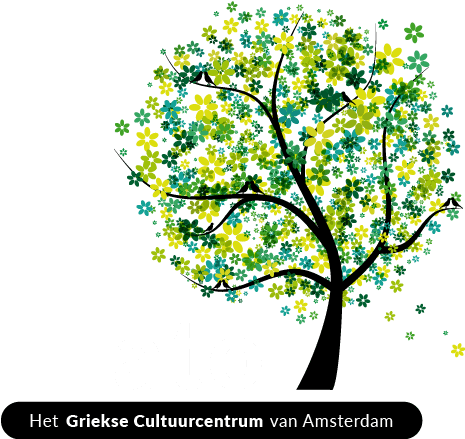No products in the basket.
The art of Graffiti from antiquity until our days
Modern cities: black and white life on a coloured background!
The spirit of our times, expressed in the form of coloured shapes, images and signatures on concrete walls. Graffiti and Tags: a new form of art that has entered into our lives in recent years.
Many find it unsightly. Many others again think it is an innovation. But regardless of the reason which pushes every “graffiti artist” to leave his artistic footprint on a dirty wall rather than a canvas, the fact remains that graffiti remains an expression of a general feeling. And it is certainly not only a phenomenon of our times.

Graffities in antiquity.
People’s tendency to leave their message on a wall is recorded for the first time with rock paintings. A walk through the archaeological monuments will convince us that this tactic didn’t stop at the rocks of the caves, since the engravings on the Parthenon, the advertisements for the prostitution of Pompeii, the name of Lord Byron in the Temple of Poseidon at Sounio and the name of Rimbaud in Luxor, are facts that we cannot ignore.
The oldest known graffiti at Pompeii happens to be among the simplest: “Gaius was here”. Or, more precisely, “Gaius Pumidius Diphilus was here,” along with a time stamp, which historians have dated to October 3, 78 B.C.
Much of the graffiti at Pompeii seems surprisingly modern. They include declarations of love like “Health to you, Victoria, and wherever you are may you sneeze sweetly.”; insults, like “Sanius to Cornelius: Go hang yourself!”; and remembrances, like “Pyrrhus to his best friend Chias: I’m sorry to hear you are dead, and so, goodbye!”. They expressed also thoughts or desires, like “Health to the ones who love. The ones who do not know to love to get lost. Double to get lost the ones who prevent love”. This is just one of the many engravings we can see in the house of Cecilius Iukudus in Pompeii.
There are also painted inscriptions that include political campaign messages, advertisements for Gladiatorial games, and other public notices. The commonplace nature of these inscriptions is part of what makes them so historically valuable.
Passion for sports & Graffiti.
In Roman amphitheaters, we will also find engraved scenes with gladiators and other scenes of similar content. Always of course, accompanied by the corresponding comments, which sometimes could shock even the most modernists.
In the same “sport-fond” spirit during the Byzantine years, the fans of horseraces did not hesitate to collide with each other and to create riots, misleading very often the simple citizens as well. In the end, when everybody seemed to be calm again, they didn’t miss the chance to leave their comments on the walls or the columns of the temples. Insults or hymns … the walls were always welcoming even to the most extreme feelings of the folk artists.
How much different is this from what happens today with the fans of football teams?
The traces of Vikings
Constantinople (nowadays known also as Istanbul) was the capital of Byzantium – one of the great powers of the 10th century. The Agia Sophia (which today is a museum) was one of the biggest churches and a unique model of architecture. There, Halvdan and Are, two Vikings, carved their names inside the building.
There are historical accounts that tell us about Viking expeditions to Constantinople but it is also mentioned that Vikings were employed as bodyguards to the Byzantine emperor.
“A call for help” expressed by graffiti.
Another very characteristic category of inscriptions is the one where the writers call for divine help. Wars, political or religious riots, storms in the sea …
The best example of this expression is to be found in the Bay of Letters (Ormos ton Grammaton) on the Greek island of Syros. At a time when the Aegean was full of ships of every nationality, there were not only a few times when the stormy weather forced the sailors to find a natural shelter to protect themselves and get saved from nature’s fury.
Then everyone was praying to his own god, leaving his own message on the rocks for safe travel and safe return. Names of sailors, ship names, dangers, wishes … one can read all in more than 100 inscriptions. In the past they were more but unfortunately, the power of nature and the waves did not leave them untouched.
Many of the Parthenon engravings -232 in total – have the same character: ordinary people seeking help. And along with these, also announcements of deaths, reference of names and extracts from texts. Then the Latvian clergy who took over the management of the temples of Athens -the days of western sovereignty – left their own memories, wishes or hopes on the columns of Parthenon. Most of the times, the misspelled character of the messages makes clear the folk character of the writers.
Graffiti in modern times.
Later, in modern times, during the civil war or the German Occupation, the walls hosted the popular ideology, political messages, anti-authoritarian messages, messages that want to stir up popular sentiment.
And when everything seemed to come in balance, social and advertising messages appeared.
Today the content of the wall is changed again: reaction, hopelessness, despair, love, betrayal … These are just some of the hundreds of emotions that a trained eye could catch behind the vibrant colors and bold patterns.
© Lato,
Het Griekse Taal– & CultuurCentrum van Amsterdam



